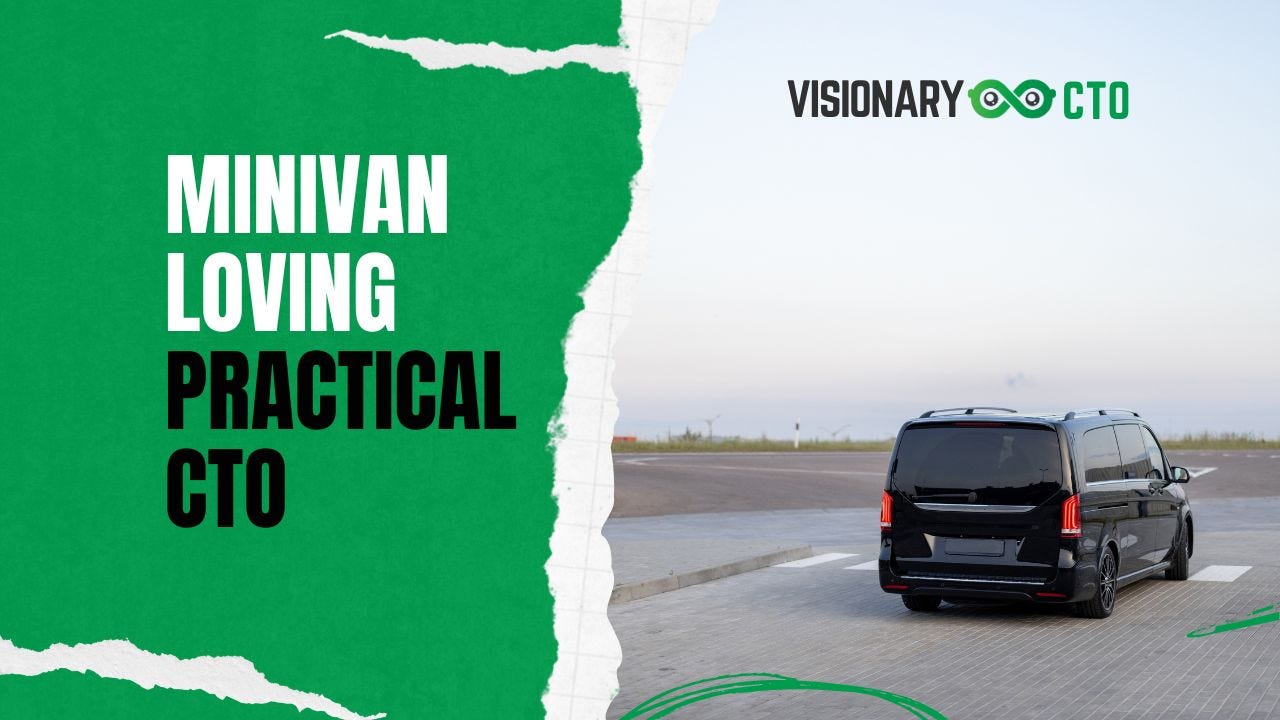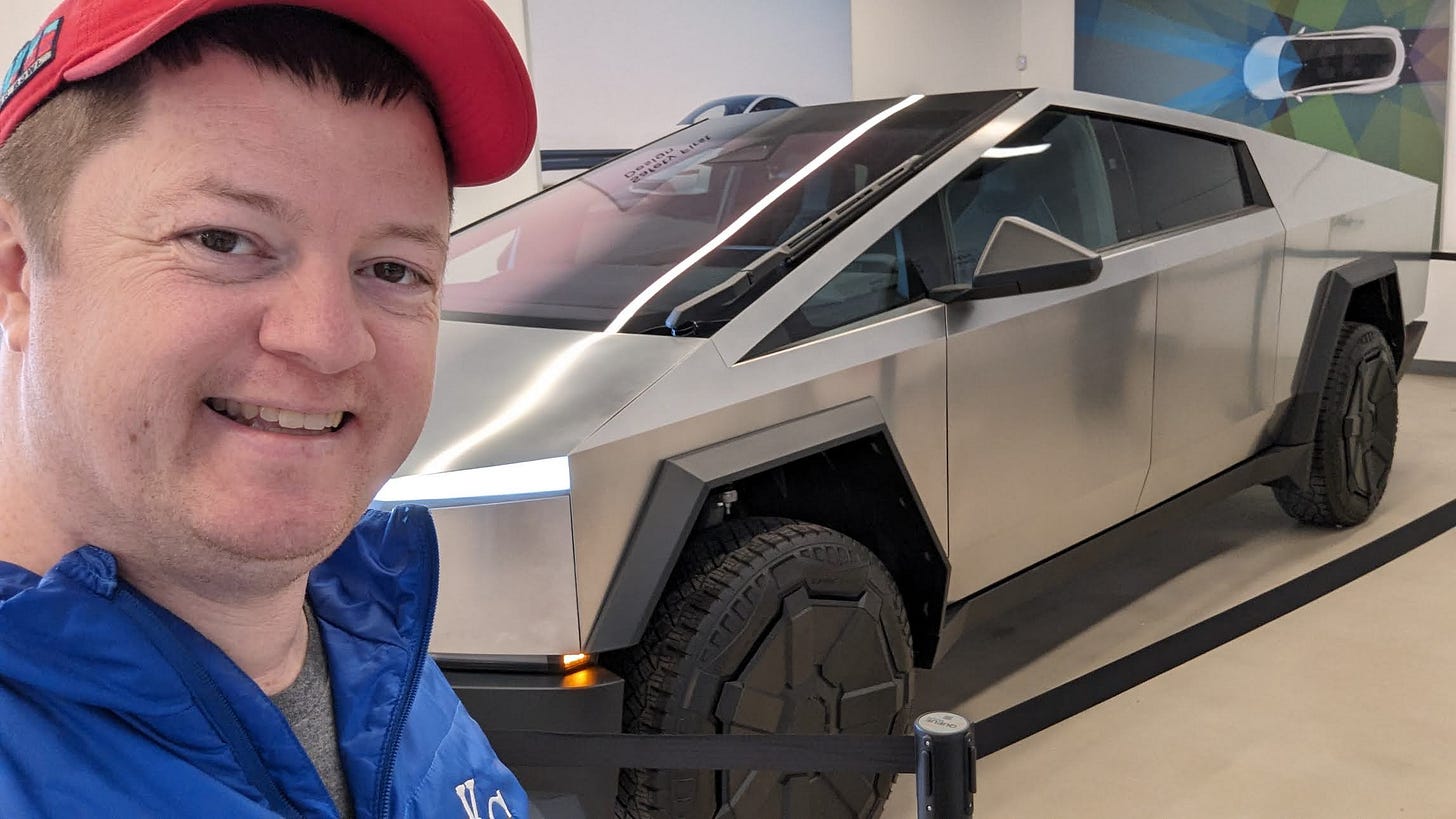The Minivan Loving Practical CTO
Practical and boring is precisely what most companies need from their software development team and CTO
A CTO is in charge of a company's technology strategy and leadership. At many companies, they also control a huge part of the company budget between software development expenses, hardware, and hosting costs.
Every month, they control how company resources are invested in the company’s product. Are we building new features, fixing bugs, or building brand-new products? Are we hiring fancy consultants for $300 an hour or offshore developers for $29 an hour to complete the work?
A person with that much power needs to be practical and pragmatic.
I want them to be so practical that they love minivans.
Why minivans?
Because minivans are so practical and boring, people hate them. Perfect!
Practical and boring is precisely what most companies need from their software development team and CTO.
Why Being Practical Matters
I recently remodeled my master bathroom, and they tried to sell me the idea of a “digital shower,” all controlled by a touchscreen or even my mobile phone.
Did I buy it?
Not this practical CTO!
I’d rather have the more practical plumbing that isn’t going to break or need a security patch in the next 30 years. (Something about mixing water and electronics also sounds like a terrible idea.)
This practical thinking is also essential for managing software development and product teams.
I don’t want my teams chasing shiny new objects. I’m not wasting my time on expensive tools I don’t need or the latest React competitor trending on Hacker News yesterday.
Software development is similar to plumbing. I prefer it to be just as boring and practical.
Let’s cover some reasons why you need a practical CTO.
Resource Optimization
Small companies typically operate with limited resources. A practical CTO understands this constraint and makes technology decisions that maximize value while minimizing waste. Whether it's choosing an affordable cloud service provider or deciding to use open-source software, these decisions ensure that the company's scarce resources are used efficiently.
Focus on Core Business Needs
Practical decision-making means focusing on solutions that directly address the core needs of the business. It's easy to get caught up in the latest tech trends, but a practical CTO knows that not every new technology is a fit for their specific business context. This approach ensures that the technology stack aligns with the company's business goals.
Building a Sustainable Tech Ecosystem
A practical CTO looks beyond the immediate needs and plans for a sustainable future. This involves making decisions that are scalable and maintainable. For example, prioritizing code readability and maintainability, even when it means spending a bit more time on development, can save countless hours and resources in the long run.
Enhanced Agility
In a small company, agility is key. A practical CTO can quickly pivot and adapt to changing market conditions or business needs. This agility allows the company to capitalize on new opportunities more effectively than competitors who may be bogged down by less flexible technology strategies.
Risk Mitigation
Practical decision-making inherently involves a careful evaluation of risks. By avoiding the "shiny object syndrome" and focusing on what truly works, a practical CTO helps the company avoid unnecessary risks associated with unproven or unsuitable technologies.
Cultivating a Pragmatic Culture
The approach of the CTO often sets the tone for the entire technology team. A practical CTO fosters a culture where practicality, efficiency, and business alignment are valued. This culture can be a significant asset in attracting talent who share these values and contributing to the overall health and growth of the company.
Pick the Dodge Caravan of Tech Stacks
All the hipsters are using Rust, Go, and other programming languages. If I was starting a tech company today, I would use something old that is easy to work on. A tried and trued tech stack that has been around the block for a long time. One that everyone knows how to use and is battle-hardened.
Take your pick from PHP, Java, .NET, Python, or even all JavaScript. They all have huge dev communities, and it is easy to find talent. Pick something that is stable and reliable with excellent tools.
You want something like this old Dodge Caravan that is easy to work on.
Innovate While Being Practical
I want my team to be practical, pragmatic, and frugal. I want them to use boring tech stacks. I don’t want them on the bleeding-edge of technology. We don’t have an unlimited budget to build our software. We have to be frugal with how we get it built.
That doesn’t mean we can’t innovate and build awesome products.
I also want to prioritize flexibility in a world where we know things change constantly. Every company is one pivot away from greatness. The minivan is ready for flexibility. One day, it is a passenger van taking 5 kids to soccer; the next day, it is a cargo van donating junk from my basement.
Let’s compare the minivan to the super cool Tesla CyberTruck.
This CyberTruck is cooler. It is also two years behind schedule.
Virtually every startup would have run out of cash if their product delivery was that far behind schedule.
So, why should a CTO love minivans? Because they represent an approach to technology leadership that is grounded, realistic and focused on the long haul.
It's about making decisions that might not be glamorous but are in the best interest of the company and its stakeholders.
Companies need practical and pragmatic CTOs.




That's a great comparison. I was recently asked how I pick technologies, and first, I had to admit that my process has changed a lot in the past few years.
I value:
Maturity - tried and true plumbing over the digital shower
Community - If I can't, the guy next door can fix it
Innovation - still, I prefer to shower in a more modern setting. That’s why I write all this code, right? 😄
You're a man after my own heart Matt. Tech is there to solve a problem. Too many CTOs just want to pad their resumes, leaving chaos in their wake!